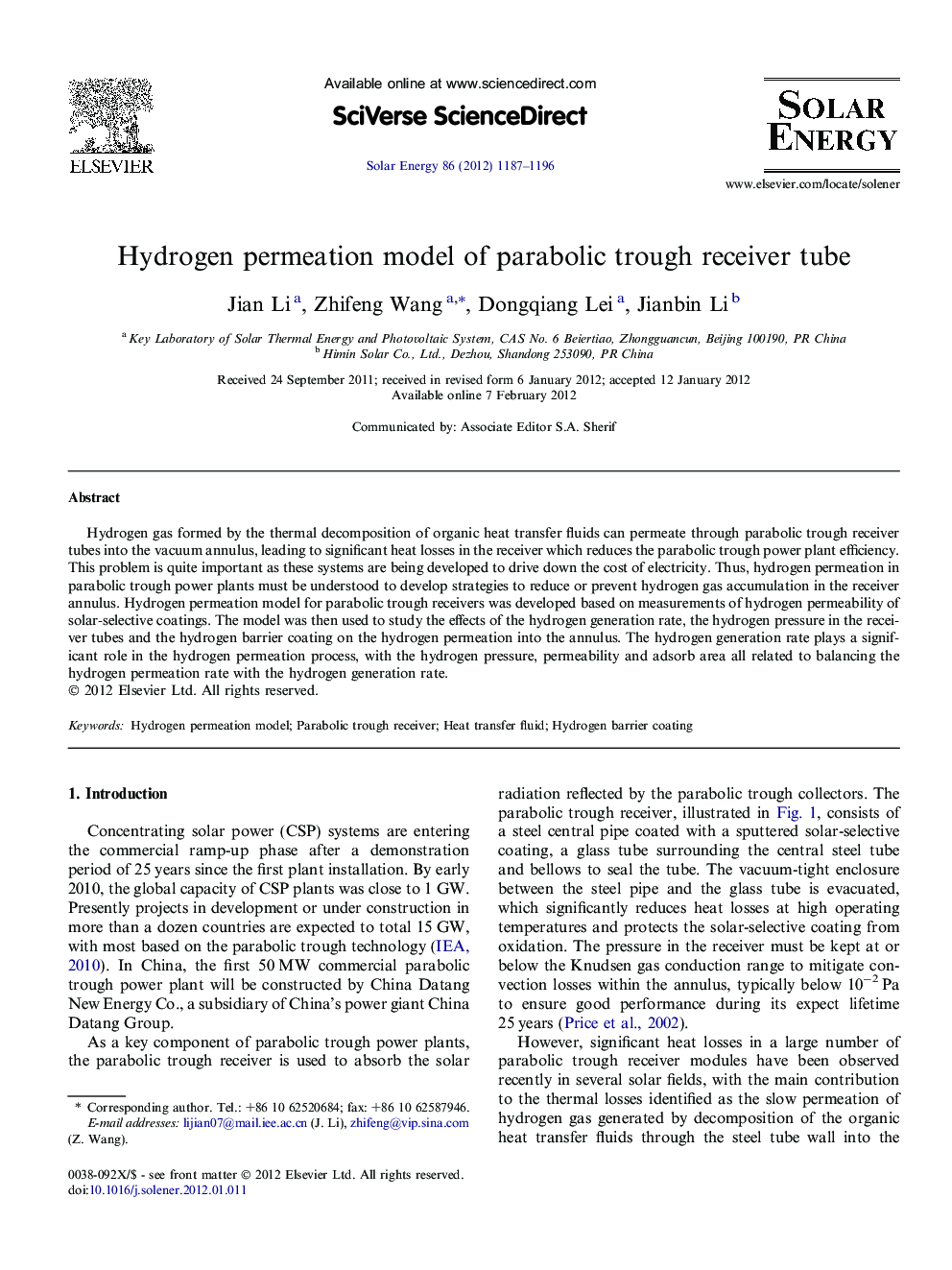| Article ID | Journal | Published Year | Pages | File Type |
|---|---|---|---|---|
| 1551063 | Solar Energy | 2012 | 10 Pages |
Hydrogen gas formed by the thermal decomposition of organic heat transfer fluids can permeate through parabolic trough receiver tubes into the vacuum annulus, leading to significant heat losses in the receiver which reduces the parabolic trough power plant efficiency. This problem is quite important as these systems are being developed to drive down the cost of electricity. Thus, hydrogen permeation in parabolic trough power plants must be understood to develop strategies to reduce or prevent hydrogen gas accumulation in the receiver annulus. Hydrogen permeation model for parabolic trough receivers was developed based on measurements of hydrogen permeability of solar-selective coatings. The model was then used to study the effects of the hydrogen generation rate, the hydrogen pressure in the receiver tubes and the hydrogen barrier coating on the hydrogen permeation into the annulus. The hydrogen generation rate plays a significant role in the hydrogen permeation process, with the hydrogen pressure, permeability and adsorb area all related to balancing the hydrogen permeation rate with the hydrogen generation rate.
► We measured the hydrogen permeation parameters of solar-selective coating. ► We developed the hydrogen permeation model of the parabolic trough receiver. ► It needs more getters for parabolic trough receivers at the high-temperature. ► The hydrogen permeation rate try to approach the hydrogen generation rate.
